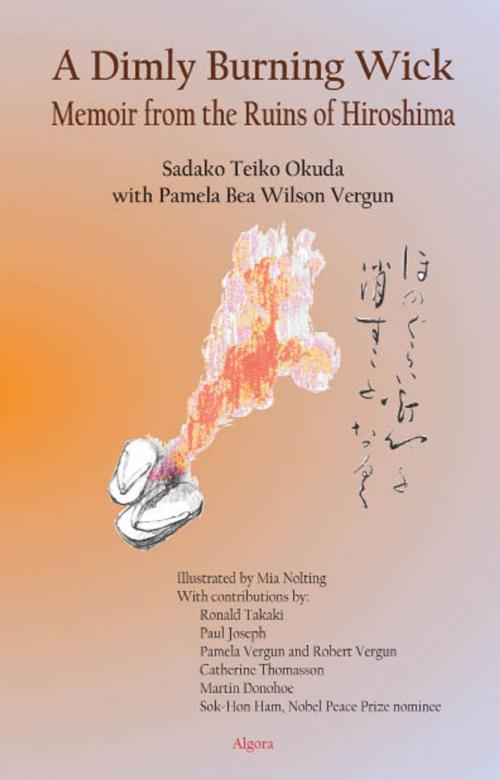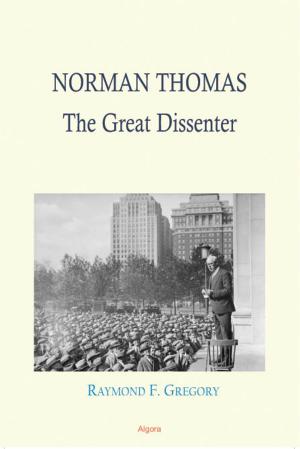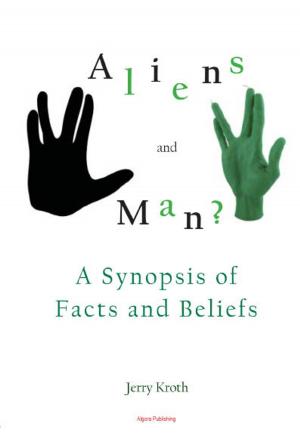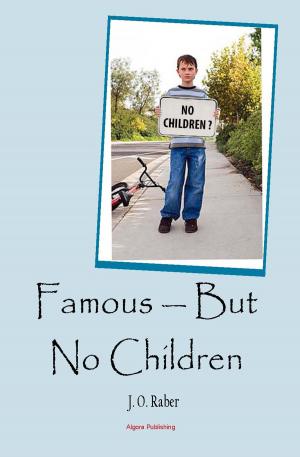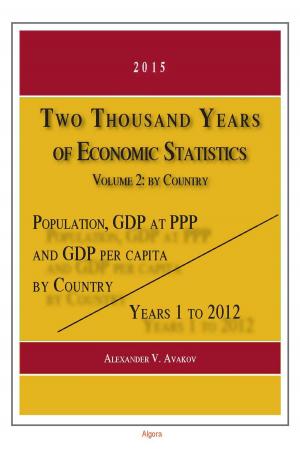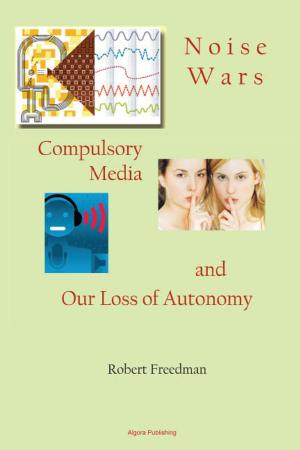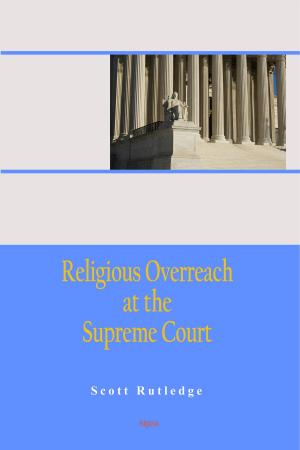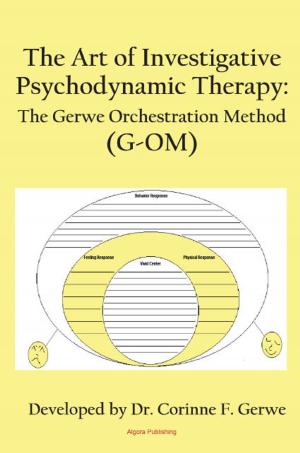A Dimly Burning Wick: Memoir from the Ruins of Hiroshima
Nonfiction, History, Military, Nuclear Warfare| Author: | Sadako Okuda, Pamela B. Vergun | ISBN: | 9780875865621 |
| Publisher: | Algora Publishing | Publication: | December 15, 2009 |
| Imprint: | Algora Publishing | Language: | English |
| Author: | Sadako Okuda, Pamela B. Vergun |
| ISBN: | 9780875865621 |
| Publisher: | Algora Publishing |
| Publication: | December 15, 2009 |
| Imprint: | Algora Publishing |
| Language: | English |
At the heart of A Dimly Burning Wick is her searing diary recording the final moments of dying civilians and their distinctive perspective on this horrific event. The first part of the book presents a series of immediate, sickening, and amazing impressions as the sufferers extend gestures of enormous humanity and generosity amid hell-like conditions. Most harrowing and heartbreaking of the victims were the children she encountered, helplessly roaming the streets in pain and dismay.
The children were heading for school on the morning of August 6 when the Enola Gay soared overhead and dropped the atomic bomb that exploded some 2,000 feet above the city, killing or destroying the lives of hundreds of thousands of civilians. In the aftermath, Sadako Okuda searched for eight days for her young niece and nephew in the smoking ruins, in a place that can only be described as Âa scar that must have been made by the fingernail of the devil himself. Mothers and grandparents desperately searched for lost children, wounded children cared for one another, and human beings whose flesh was as torn and burnt as their clothing displayed wisdom and grace as much as agony and distress. Okuda could do little more than offer them her compassion, tenderness, and love.
In the second part of the book, historians, medical experts and sociologists explore the background of the event and the social psychology that allowed Americans to accept this atrocity committed in their names. The official story used to justify the use of the bomb fails to match up with the facts at the time; racial prejudices were fanned into hatred and biased reporting was used to whip up a desire for revenge. The techniques are still with us and they frustrate honest citizens of a democracy as they seek to make responsible decisions.
Ronald Takaki (University of California at Berkeley, winner of the American Book Award) discusses why President Truman gave the order to drop the bomb when it was not a military necessity and shows that he was at odds with his own Secretary of War on how to deal with the Japanese.
Dr. Martin Donohoe and Dr. Catherine Thomasson (board members of Physicians for Social Responsibility) contributed to an essay outlining some of the basic medical effects of the bombing. ÂPeople and objects that were situated very close to ground zero were instantaneously vaporized. [Farther from the epicenter,] Because of extensive burns and high fevers, victims begged and pleaded for water [which was generally unavailable]. Death came immediately for many, more slowly for others  due to uncontrolled bleeding, infections, hunger, etc. Over 200,000 Japanese civilians died as a direct result of the bombings of Hiroshima and Nagasaki; high rates of cancer, cataracts, birth defects and mental illness plagued those who did survive.
An eye-opening collection of facts presented by Pamela Vergun and Robert Vergun gives a broad idea of how and why President Truman, the US Air Force and others sought to mislead the American public about Hiroshima, first suggesting (falsely) that it was a military base and then delaying and diluting reports of the civilian casualties. Thinking about the Iraq War and evidence that America plans to attack Iran, they observe that Âconformity, prejudice, and the tendency to justify the use of militarily unnecessary and inhumane aggression in times of war are powerful social forces that have affected public opinion and policy decisions. Understanding these connections is essential because similar social forces continue to impact beliefs and decisions by individuals and governments.
In the words of sociologist Paul Joseph (Director of the Peace and Justice Studies Program at Tufts University), ÂThe memory of Hiroshima promoted by official Washington has attempted to obliterate [these] messages, namely that war is a tragedy for human beings and that human beings can actually stand up and prevent war. Instead, by attempting to keep the public insulated from horrific imagery, most US policy-makers have encouraged Americans to forget.Â
Museums aim to work against such forgetting, but as Sok-Hon Ham (Nobel Peace Prize Nominee) observes, ÂI have been to Hiroshima and have visited the horrible remains and relics in the museum. The feelings I experienced at that time, however, were no match for the moving emotions I experienced as I read this book.Â
The combination of personal story and analysis makes this short, accessible work a definitive resource for understanding the enormity of this event. Several books about Hiroshima appeared on the 50th anniversary, about ten years ago. However, those books are gradually going out of print. Even at a time of heightened international concern regarding nuclear proliferation, we are losing access to the memories of the survivors of nuclear attacks. The US atomic bombing of Hiroshima and Nagasaki caused unspeakable devastation, yet our collective view of this catastrophic event was shaped by government Âspin, and the memory has faded over time. The testimony in these pages, and the realization that Washington frankly abused the publicÂs trust, add up to a wake-up call as America debates how best to defend its national interests while acting as a responsible global citizen.
At the heart of A Dimly Burning Wick is her searing diary recording the final moments of dying civilians and their distinctive perspective on this horrific event. The first part of the book presents a series of immediate, sickening, and amazing impressions as the sufferers extend gestures of enormous humanity and generosity amid hell-like conditions. Most harrowing and heartbreaking of the victims were the children she encountered, helplessly roaming the streets in pain and dismay.
The children were heading for school on the morning of August 6 when the Enola Gay soared overhead and dropped the atomic bomb that exploded some 2,000 feet above the city, killing or destroying the lives of hundreds of thousands of civilians. In the aftermath, Sadako Okuda searched for eight days for her young niece and nephew in the smoking ruins, in a place that can only be described as Âa scar that must have been made by the fingernail of the devil himself. Mothers and grandparents desperately searched for lost children, wounded children cared for one another, and human beings whose flesh was as torn and burnt as their clothing displayed wisdom and grace as much as agony and distress. Okuda could do little more than offer them her compassion, tenderness, and love.
In the second part of the book, historians, medical experts and sociologists explore the background of the event and the social psychology that allowed Americans to accept this atrocity committed in their names. The official story used to justify the use of the bomb fails to match up with the facts at the time; racial prejudices were fanned into hatred and biased reporting was used to whip up a desire for revenge. The techniques are still with us and they frustrate honest citizens of a democracy as they seek to make responsible decisions.
Ronald Takaki (University of California at Berkeley, winner of the American Book Award) discusses why President Truman gave the order to drop the bomb when it was not a military necessity and shows that he was at odds with his own Secretary of War on how to deal with the Japanese.
Dr. Martin Donohoe and Dr. Catherine Thomasson (board members of Physicians for Social Responsibility) contributed to an essay outlining some of the basic medical effects of the bombing. ÂPeople and objects that were situated very close to ground zero were instantaneously vaporized. [Farther from the epicenter,] Because of extensive burns and high fevers, victims begged and pleaded for water [which was generally unavailable]. Death came immediately for many, more slowly for others  due to uncontrolled bleeding, infections, hunger, etc. Over 200,000 Japanese civilians died as a direct result of the bombings of Hiroshima and Nagasaki; high rates of cancer, cataracts, birth defects and mental illness plagued those who did survive.
An eye-opening collection of facts presented by Pamela Vergun and Robert Vergun gives a broad idea of how and why President Truman, the US Air Force and others sought to mislead the American public about Hiroshima, first suggesting (falsely) that it was a military base and then delaying and diluting reports of the civilian casualties. Thinking about the Iraq War and evidence that America plans to attack Iran, they observe that Âconformity, prejudice, and the tendency to justify the use of militarily unnecessary and inhumane aggression in times of war are powerful social forces that have affected public opinion and policy decisions. Understanding these connections is essential because similar social forces continue to impact beliefs and decisions by individuals and governments.
In the words of sociologist Paul Joseph (Director of the Peace and Justice Studies Program at Tufts University), ÂThe memory of Hiroshima promoted by official Washington has attempted to obliterate [these] messages, namely that war is a tragedy for human beings and that human beings can actually stand up and prevent war. Instead, by attempting to keep the public insulated from horrific imagery, most US policy-makers have encouraged Americans to forget.Â
Museums aim to work against such forgetting, but as Sok-Hon Ham (Nobel Peace Prize Nominee) observes, ÂI have been to Hiroshima and have visited the horrible remains and relics in the museum. The feelings I experienced at that time, however, were no match for the moving emotions I experienced as I read this book.Â
The combination of personal story and analysis makes this short, accessible work a definitive resource for understanding the enormity of this event. Several books about Hiroshima appeared on the 50th anniversary, about ten years ago. However, those books are gradually going out of print. Even at a time of heightened international concern regarding nuclear proliferation, we are losing access to the memories of the survivors of nuclear attacks. The US atomic bombing of Hiroshima and Nagasaki caused unspeakable devastation, yet our collective view of this catastrophic event was shaped by government Âspin, and the memory has faded over time. The testimony in these pages, and the realization that Washington frankly abused the publicÂs trust, add up to a wake-up call as America debates how best to defend its national interests while acting as a responsible global citizen.
